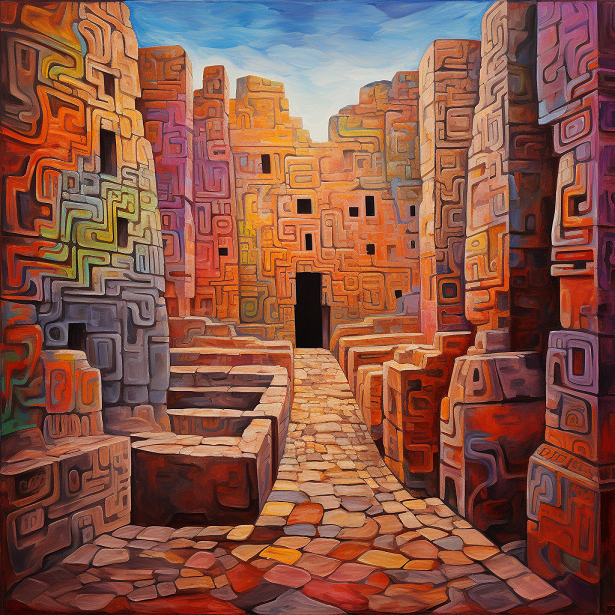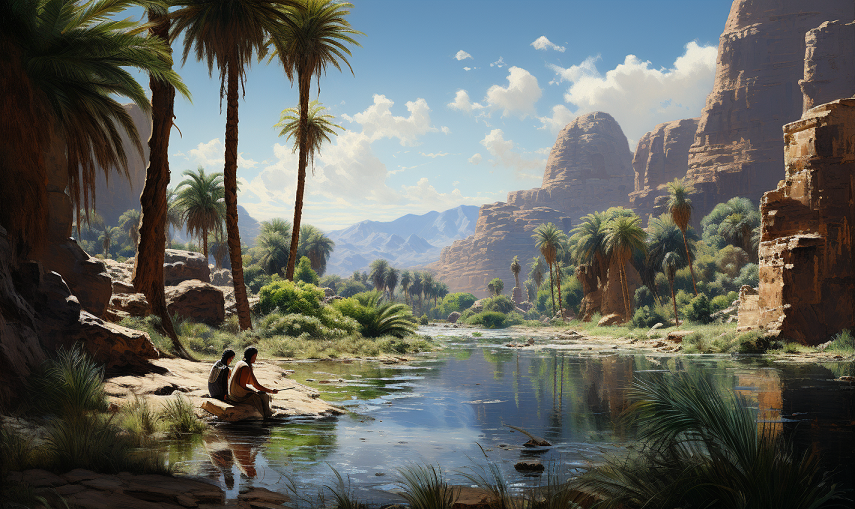In the 19th century Central Arabia, with its vast steppes and deserts, stood as a timeless tapestry, resilient against the passage of centuries, portraying a societal ethos that remained remarkably constant for centuries. In the exploration of this enigmatic region, the indomitable spirit of Charles Doughty emerges as a guiding force, providing a comprehensive view of the nomadic life that defines these arid landscapes. Doughty’s discerning perspective as detailed in his travel narratives offered an unparalleled glimpse into the intricacies of a culture that defies facile understanding. This essay embarks on a journey through the annals of Central Arabia, delving into the geological nuances of Jabal Shammar, the historical significance of Teima and Kheibar, and the hydrographic importance shaping the region’s narrative.
Doughty’s Portrayal of Desert Societies
Within the arid expanse of Central Arabia, Charles Doughty’s unparalleled portrayal of desert societies transcends the commonplace, offering an insightful lens into a world often misunderstood. Doughty’s narrative prowess, navigates through the shifting sands of preconceived notions about Semitic cultures. His language, despite occasional untimely elaboration, achieves a precision and inevitableness that is the hallmark of supreme style.
Doughty’s vivid descriptions transport the reader into the heart of nomadic life, where the resilience of camels in the spring pasture becomes a story of survival. His pen captures the nocturnal rituals and beliefs, revealing a culture that thrives in the duality of the harsh desert and the ethereal night. While one might wish for a more condensed narrative, Doughty’s quixotic genius, sustained through a thousand pages of “Arabia Deserta,” aligns seamlessly with the primaeval society he endeavours to depict.
Geographical Features of Central Jabal Shammar
In the heart of Central Arabia, Jabal Shammar emerges as a geological marvel, characterised by a plateau adorned with parallel ridges—Aja and Selma. Aja, the more northerly and imposing ridge, rises abruptly on the twenty-eighth parallel of latitude, showcasing granite crags that extend for about a hundred miles. Doughty’s eloquent descriptions of these formations bring to life the stark beauty of the landscape, where the interplay of granite and sandstone shapes the very contours of existence.
Teima Oasis
Teima, a pivotal oasis, stands as a historical crossroads, its significance rooted in its role as a road station. Doughty’s meticulous exploration unveils the layers of Teima’s past, from its ancient inscriptions to its importance in trade routes. The oasis becomes a focal point for understanding the convergence of cultures and the historical imprints left by those who traversed its terrain. Of particular note are the Teima stones, containing aramaic inscriptions recording the introduction of a new deity to the people of the settlement.

Kheibar
In contrast, Kheibar, positioned three days’ journey southward, presents a different narrative. Surrounded by sharp lavas and avoided by main caravan tracks, Kheibar’s challenges lie in its agricultural constraints and the looming presence of the Harb Bedawins. Doughty’s narrative paints a picture of a less explored oasis, marked by an absence of ancient monuments and its previous abandonment by Jews to a contemporary African population.
Huber’s Tragic Fate
In the annals of Arabian exploration, the tragic fate of French explorer Chjarles Huber adds a poignant layer to the narrative. His pursuit of knowledge, shared with Doughty in the exploration of Kheibar’s watershed, takes a somber turn with his untimely demise. Huber’s journal, a testament to his dedication, reflects the challenges and dangers that befell those who sought to unravel the mysteries of Central Arabia.
Guarmani as the First European Visitor to Kheibar
Amidst the formidable explorers, Guarmani emerges as the pioneer—the first European visitor to Kheibar. His account, though briefer than Doughty’s, provides an initial glimpse into an oasis less traversed. Guarmani’s observations contribute to the mosaic of Central Arabian exploration, establishing a foundation for subsequent adventurers who would follow in his footsteps.
The Teima Stone, a significant archaeological artifact, plays a central role in the exploration narrative of Central Arabia. Discovered in Teima, a pivotal oasis in the region, the stone bears inscriptions and engravings that trace its historical roots to the pre-islamic era. The origin of its discovery is intertwined with the explorations of Charles Doughty and his contemporaries, particularly Huber and Euting. Doughty, in his meticulous exploration of Teima, provides a vivid account of stumbling upon this stone, revealing its presence among the ruins of an ancient fort known as Kaser el-Jeudi. The stone’s historical importance lies in its inscription, which documents the introduction of a foreign worship into Teima. Huber, following in Doughty’s footsteps, furthered the exploration and, along with Euting, played a pivotal role in acquiring the stone. This discovery sheds light on the cultural and religious influences that permeated Teima in ancient times, offering a tangible link to the historical tapestry of Central Arabia.

Disputes Surrounding Teima Stone
The historical journey of the Teima Stone unfolds against a backdrop of international intrigue and scholarly disputes. Notable figures like Noldeke and Snouck Hurgronje become central characters in the saga, their roles reflecting the complexities of acquiring and interpreting historical artifacts. Noldeke, receiving a letter from Euting about the stone’s discovery, becomes an unwitting participant in a story that transcends mere archaeological interest.
Lostalot’s Report and International Jealousy
Lostalot’s report adds a layer of diplomatic tension, as international jealousy simmers around the ownership of the Teima Stone. The French consul’s emissary, sent to secure the artifact, becomes entangled in a web of suspicion and accusations. Lostalot’s allegations against Snouck Hurgronje and his expulsion from Mecca add a dimension of
political intrigue to the quest for possession, revealing the high stakes involved in the pursuit of historical treasures.
Fate of Huber and the Stone’s Journey to the Louvre
Huber’s tragic fate intertwines with the stone’s journey, marking a somber chapter in Arabian exploration. The stone’s final destination in the Louvre, secured through international negotiations, symbolizes the culmination of a tumultuous narrative. The perseverance and dedication of those involved in its recovery underscore the challenges inherent in preserving historical artifacts and the global significance attached to them.

